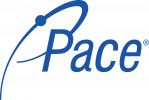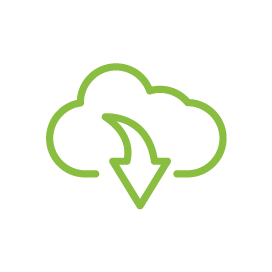PFAS IN THE PAPER AND PAPER PRODUCTS INDUSTRY
Home / Industries & Entities / Pulp & Paper
PFAS regulations are having a ripple effect across the paper and paper products industry. Here’s what you need to know about the latest regulations and the science of PFAS testing and analysis.
PFAS IN PAPER AND PAPER PRODUCTS
For decades, per- and polyfluoroalkyl substances (PFAS) have been used to make paper and paper products water, grease, and stain-resistant, ideal characteristics for many types of packaging materials. In recent years, PFAS in packaging has become a frequent target of regulators as these chemicals have also been shown to be environmentally persistent, bioaccumulative, and harmful to human health. In addition, the U.S. EPA continues to study PFAS in wastewater effluent from the pulp, paper, and paperboard industry.
IS YOUR BUSINESS IMPACTED BY PFAS REGULATIONS?
Several states have already implemented bans and limitations. In addition, some PFAS-related wastewater regulations can impact businesses in the pulp and paper industry.
The earliest bans and limits on PFAS started with paper products in direct contact with food, e.g., pizza boxes and microwavable popcorn bags. Since then, some states have expanded the bans to include any materials used in the food service industry, whether designed to be in direct contact with food or not.
Some state regulators are also starting to address PFAS in recyclable and compostable products. For example, California’s SB343 prohibits products containing PFAS from being marked as recyclable or compostable. Several states, including New Jersey, Massachusetts, and New York, have proposed similar bills.
The U.S. EPA’s Effluent Guidelines Program Plan 15 and Preliminary Plan 16 include the monitoring of PFAS in wastewater discharge from the Pulp, Paper, and Paperboard industry. The data gathered may lead to future limits on PFAS in wastewater discharge from paper mills and manufacturers through the National Pollutant Discharge Elimination System (NPDES).

WHICH PFAS ARE REGULATED IN PAPER PACKAGING?
It should be noted that the class of compounds known as PFAS includes several thousand individual chemicals, and variations between state laws can complicate matters. State PFAS regulations frequently narrow the list of targeted PFAS to include compounds “containing at least one fully fluorinated carbon atom.” They may also limit the banned compounds to include only those that are “intentionally added” and have a “functional or technical effect in the product.” Paper products manufacturers should be aware that states such as Vermont count PFAS from manufacturing aids, e.g., industrial lubricants, as being intentionally added if this PFAS finds its way into the final product.
Some states also consider any PFAS above certain concentrations as being intentionally added. For example, California bans PFAS in products above 100 parts per million (ppm) as measured in total organic fluorine, including in products marked as compostable or recyclable. Vermont has enacted similar legislation.
PFAS IN WASTEWATER EFFLUENT
As noted above, the U.S. EPA continues to monitor PFAS in wastewater discharge from the Pulp, Paper, and Paperboard industry. If the agency determines limits are warranted, these will be implemented through the NPDES program. Most states are authorized by the EPA to administer their own NPDES permitting program; however, state permitting agencies will be required to follow EPA-defined limits or establish stricter limits.

PFAS TEST METHODS FOR THE PAPER INDUSTRY
Pace® offers several PFAS test methods for the paper and paper products industry. Factors such as the type of matrix tested and regulatory reporting requirements frequently dictate the most appropriate method. Contact us if you have questions about how these methods can be utilized and the results they provide.
EPA 1633 is the gold standard for solid materials such as paper and for analyzing wastewater effluent. This method can measure concentrations of targeted PFAS compounds, such as PFOA and PFOS, and is the method most often required by NPDES permitting authorities and the U.S. EPA. However, other faster, less expensive methods may be used for analyzing effluent if compliance reporting is not required.
Total fluorine test methods measure the combined concentration of organic and inorganic fluorine in a sample. If seeking to comply with bans on intentionally added PFAS as measured in total organic fluorine (TOF), this method provides the closest approximation of TOF in a sample. However, these methods also measure inorganic fluorine compounds, such as sodium fluoride or hydrogen fluoride, that are not PFAS, so the results are not a definitive measurement of total PFAS.
ASTM D8421 was developed by the American Society for Testing and Materials (ASTM) to provide a definitive method for PFAS analyses in aqueous matrices. Less procedurally complex than EPA 1633, ASTM D8421 has a faster turnaround time and can usually be delivered at a lower price point than other PFAS methods. ASTM D8421 is technically similar to EPA 8327, and either method may be cited. For these reasons, D8421 is currently under review by EPA’s CWA team for inclusion in 40CFR Part 136 as an approved NPDES test method.
Developed by the U.S. EPA as a screening method for aqueous matrices, AOF/EPA 1621 measures adsorbable organic fluorine in non-potable water. It is sometimes used for NPDES permitting as well.
ON-DEMAND WEBINAR: QUANTIFYING PFAS IN CONSUMER PRODUCTS
Learn more about how Pace® analyzes PFAS in consumer goods, including paper and paper products.
REASONS TO CHOOSE PACE®

EXPERIENCED
Pace® has been an industry leader in persistent organic pollutant testing for over three decades.
CERTIFIED
We’re certified/accredited by NELAC, ISO, DOD, DOE, and in every state with a PFAS lab certification program.

RELIABLE
For emergencies, our Rapid Response Team can provide defensible results in as little as 24 hours.

COMMITTED
We are committed to helping our customers advance their important work through building strong relationships, delivering upon expectations, and providing exceptional customer service.

ADVANCED
We can test for PFAS in both solid and aqueous matrices, including potable and non-potable waters, soils, and biota.

INNOVATIVE
We’re on the leading edge of science, working with EPA, DOD, ASTM, and others to develop new methods for analyzing PFAS.




